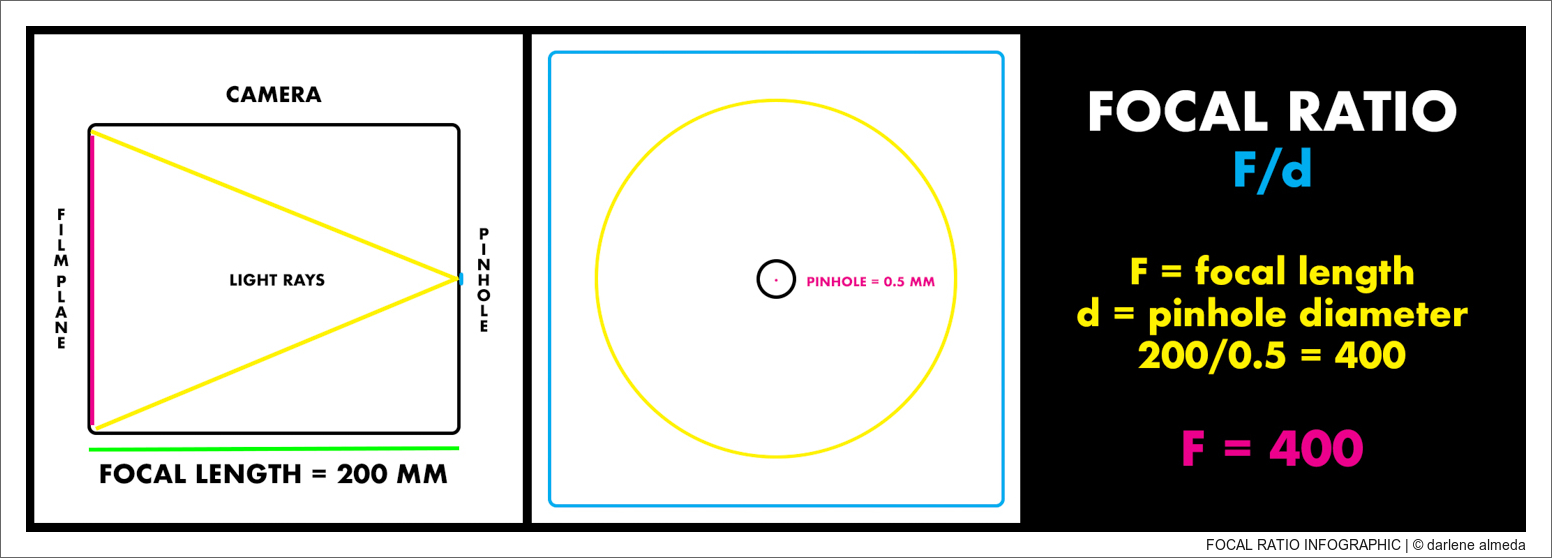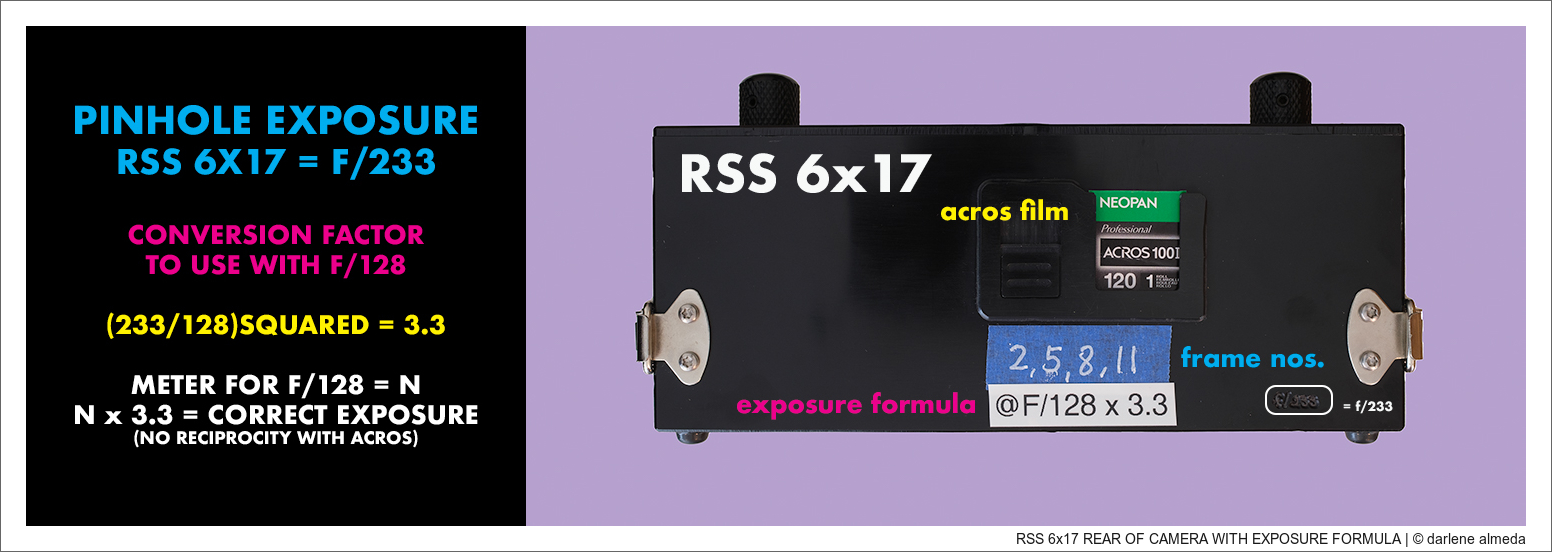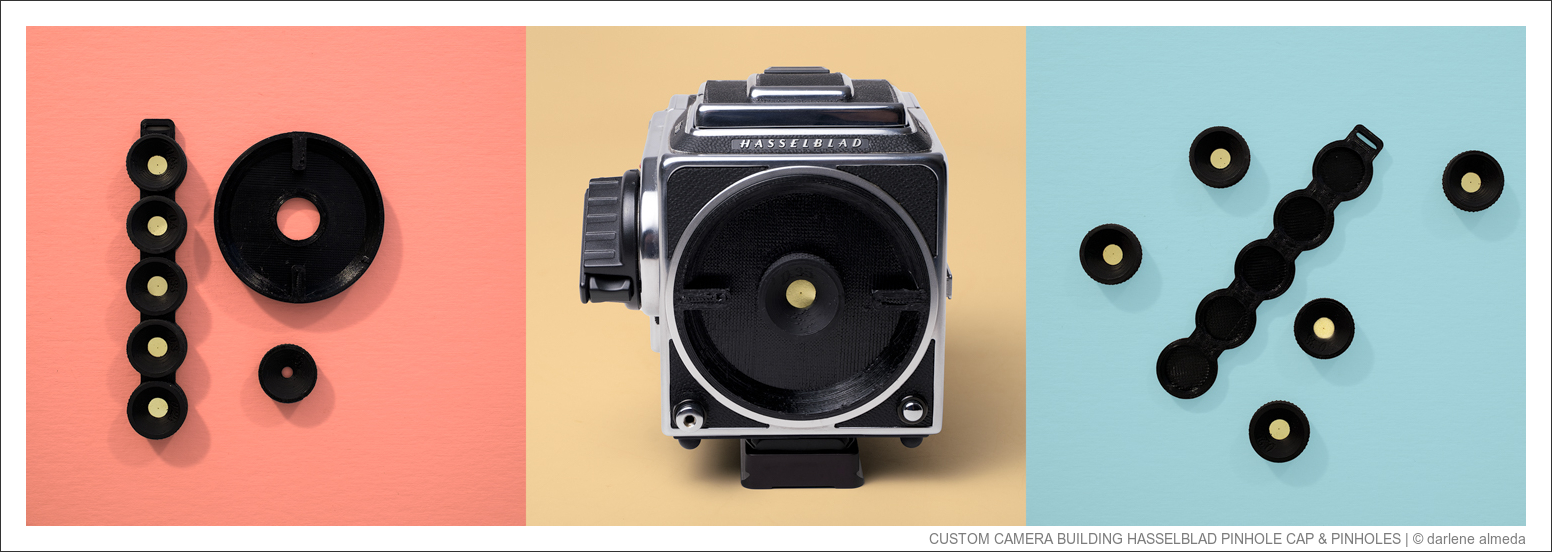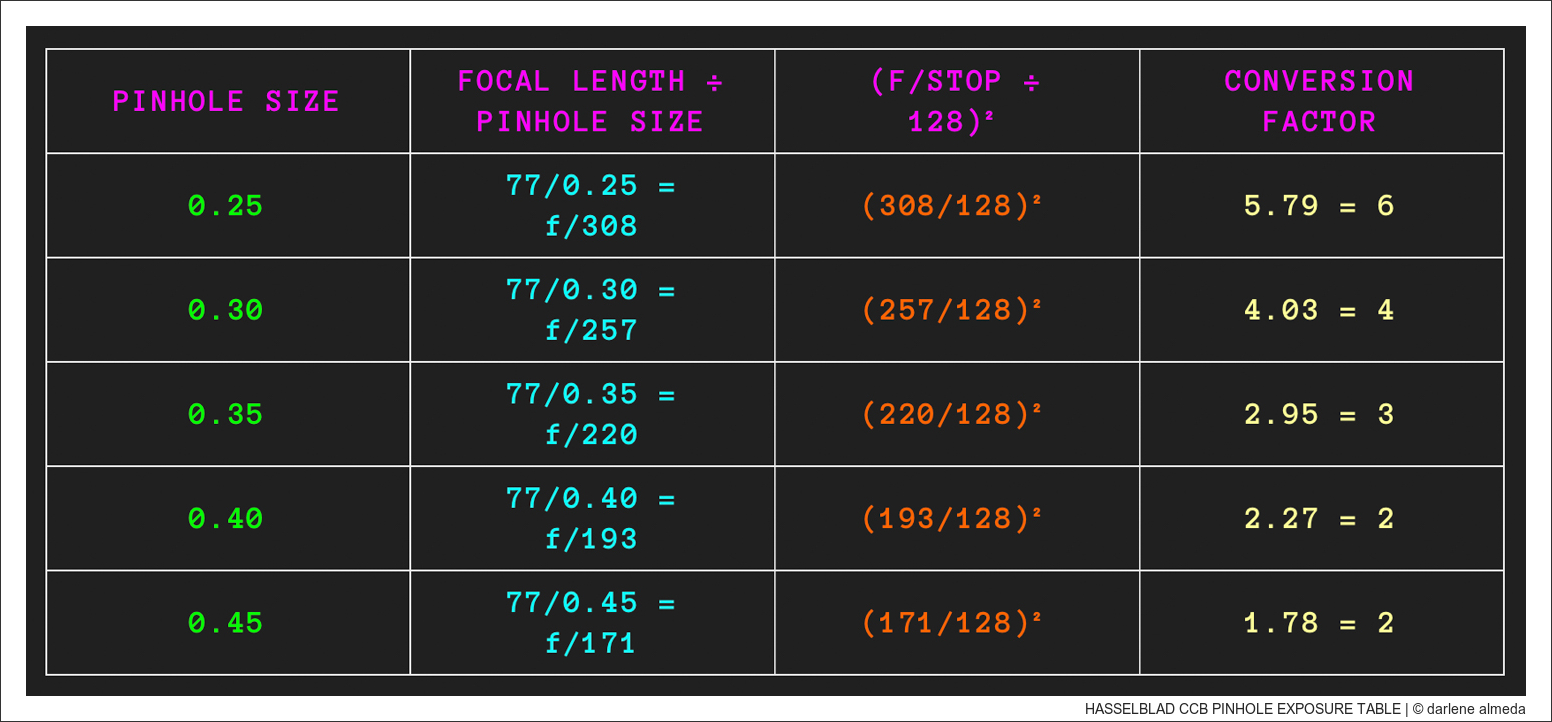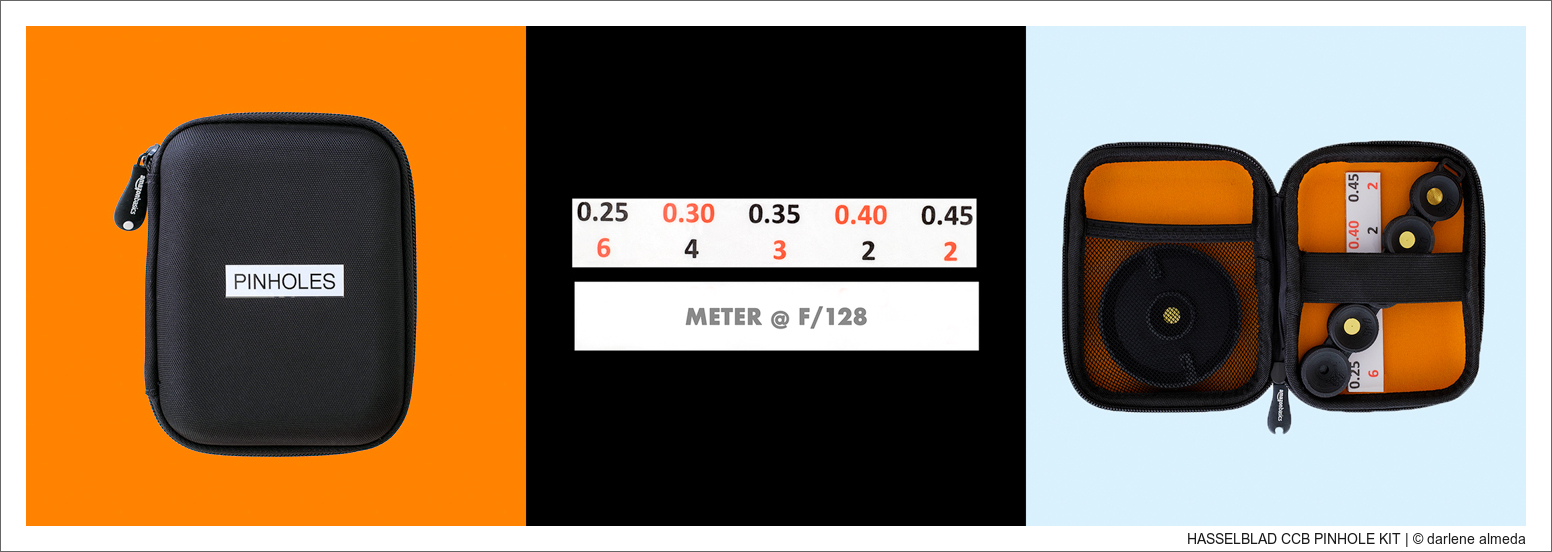PINHOLE CAPTURE BEHIND THE SCENE | RSS 6X17F + ND64 + ACROS II / 510 PYRO
The pinhole camera is a camera without a lens, and it’s sometimes referred to as a “camera obscura.” It has been used for centuries to explore the principles of light and optics and is now commonly used in education and art. Some photographers enjoy making pinhole cameras using everyday objects like cigar boxes and paint cans, while others enjoy creating with CNC machining and wood crafting. In contrast, others prefer ready-made pinholes that can be used with their existing cameras or pinhole cameras manufactured by someone else.
The main challenge for all pinhole photographers is achieving the correct exposure. Because of the teeny-tiny hole that lets light through, pinhole photography requires longer exposure times, making it difficult to get the perfect exposure without clear guidance. Some manufacturers provide exposure tables to work with light meters, and there are phone apps that can help with this.
However, this article is for minimalist pinhole photographers who prefer a simple approach without extra gadgets. This article will guide you through a straightforward process using a light meter reading and a simple conversion factor to calculate the correct exposure for all your pinhole cameras. Let’s get started!
Know The Focal Ratio of Your Pinhole Camera
- The focal length for your camera is from the back of the camera to the rear of your pinhole, measured in millimeters and designated as ‘F.’
- The size of the opening of the pinhole itself is called ‘d‘.
- F/d = focal ratio
- You need to know this number to figure out your exposure.
- Example: 200mm (focal length) / 0.5 (pinhole opening size) => 200/0.5 = F/400
Know The Diameter of Your Pinhole
- If you purchase a ready-made pinhole or pinhole camera, the maker will supply its d-number.
- For example, my pinhole d-numbers for my pinholes and cameras are:
- RSS 6×17 = 0.30
- 4×5 Titan (2 lens cones) = 0.30 & 0.50
- CCB Hasselblad Pinhole Caps = 0.25, 0.30, 0.35, 0.40 & 0.45
- Suppose you do not know your d-number for your pinhole, xerox a copy of the pinhole and measure from the copy with a millimeter ruler. If it is too small to measure, make several copies, paste them together, and then measure and divide by the number of copies (ex: 3x copies = (1+1+1)/3 = N). If you can scan the pinhole and measure it in Photoshop, that may also work.
Ready Made Pinholes & Supplied Focal Ratio Numbers
- The maker will supply its F-Number if you purchase a ready-made pinhole camera.
- I have two pinhole cameras and various Hasselblad V pinhole lens caps; all F-Numbers were supplied:
- RRS 6×17 = f/233
- 4×5 Titan (2 lens cones) = f/230 & f/290
- CCB Hasselblad Pinhole Cap + 0.35 pinhole = f/220
THE RSS 6×17 CAMERA BACK MARKED WITH EXPOSURE FORMULA
How to Calculate Exposure Once You Have The Focal Ratio
- Most light meters can read @ f/128, but typical pinhole cameras need a larger focal ratio.
- This method uses your light meter reading at f/128, the largest f/stop meters have.
- I will show how I got to the conversion factor of @F/128 x 3.3 for my RSS 6×17 camera above.
Additional Note: In traditional lens photography, the f-number is already known and marked on the lens.
In pinhole photography, however, the f-number must first be calculated using
f-number = focal length ÷ pinhole diameter.
That’s why the exposure formula references focal length directly—because it defines the effective aperture of the pinhole.
Pinhole Exposure: From f/128 Meter Reading
- Set ISO on your meter/camera and take a light-meter reading at f/128.
Let this metered time beNseconds. - Find the pinhole f-number for your setup:
f_number = focal_length ÷ pinhole_diameter
(This is the effective aperture of the pinhole.) - Compute the conversion factor (CF) from the f/128 reading:
CF = ( f_number / 128 )² - Calculate the base exposure (before reciprocity):
Base Exposure = N × CF - Apply reciprocity compensation for your film stock as needed to get the final exposure time.
- Note: CF is constant for this specific camera + pinhole + image distance.
If you change pinhole diameter or the image distance (effective focal length), recompute CF.
Worked Example
- Metered at f/128:
N = 2 s. - Pinhole effective aperture:
f/233. - Conversion factor:
CF = (233 / 128)² ≈ 3.3135. - Base exposure:
2 s × 3.3135 ≈ 6.63 s(before reciprocity). - If your film requires reciprocity at ~7 s, apply the manufacturer’s correction to get the final time.
- Label for quick use:
@ f/128 × 3.3 (before reciprocity for this camera).
CUSTOM CAMERA BUILDING HASSELBLAD PINHOLE CAP & PINHOLES
Ready-Made Pinholes for Hasselblad V Cameras
I have been a Hasselblad V shooter for decades. It was my workhorse system in the portrait and special event business. It is only natural for me to keep using these cameras for non-commercial work. They have excellent quality Zeiss lenses, and I can count on the Hasselblad system to perform. When I found pinholes made for the V system from Custom Camera Building (CCB), I had to try them out. The set includes a body cap that holds interchangeable pinholes in diameters of 0.25mm, 0.30mm, 0.35mm, 0.40mm, and 0.45mm pinholes—0.35mm is the average size for the set. CCB supplied this data: focal length with 0.35mm pinhole is 77mm, and f-stop is 220 => (77/0.35). = 220.
The Hasselblad 500 series cameras’ flange focal distance is approximately 74.9mm. Now, to convert my 501cm camera into a pinhole camera, this distance would be roughly the effective focal length of the pinhole “lens,” assuming the pinhole is situated where the lens would normally be mounted, which it is when it is installed on the supplied body cap. It looks like the CCB cap and pinhole insert add 2.1mm to the focal length, bringing it to 77mm. Where am I going with this …
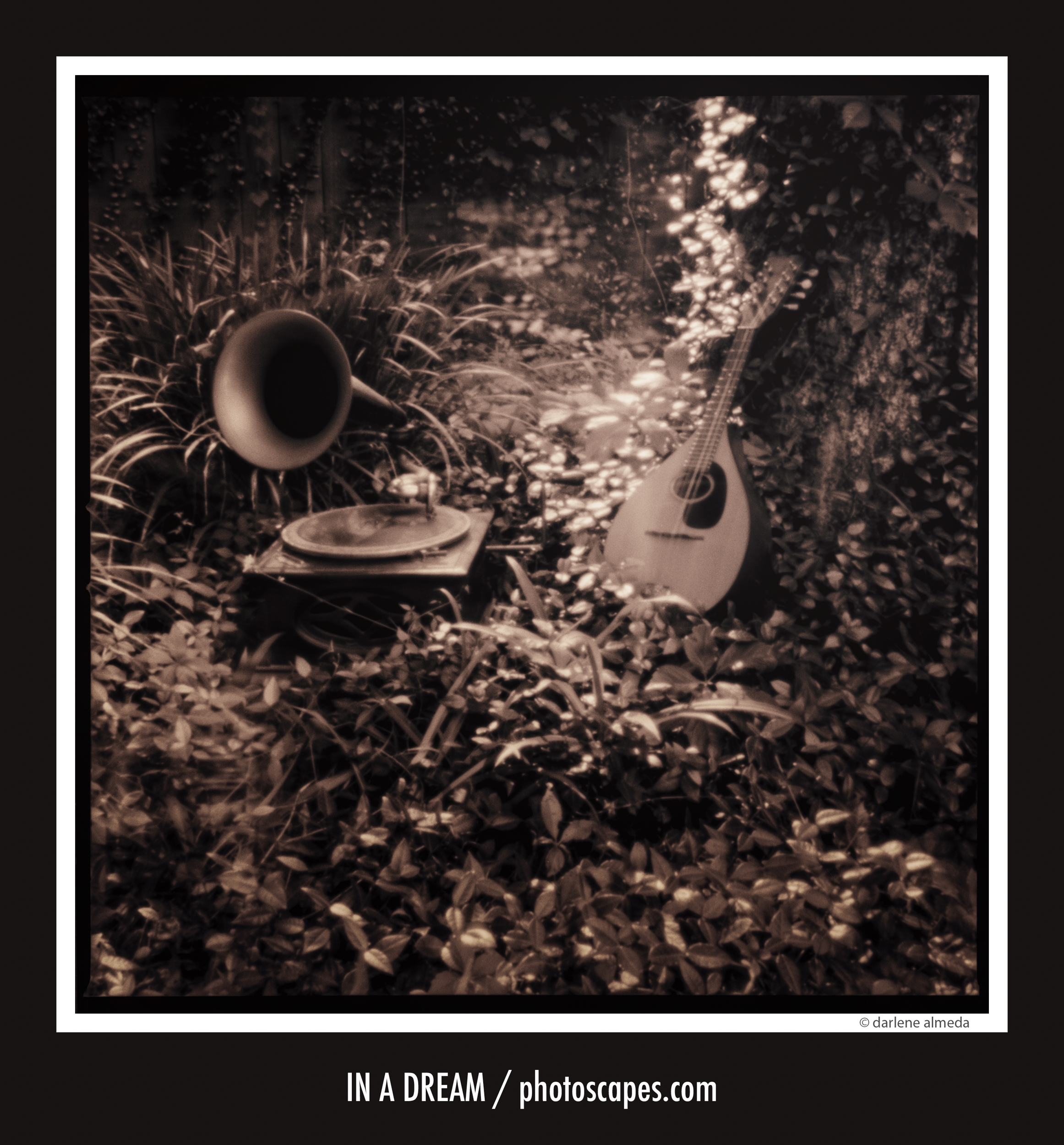
HASSELBLAD 501CM + CCB PINHOLE 0.35 + ACROS II/510 PYRO
I calculated the compensation factor for 0.25mm, 0.30mm, 0.35mm, 0.40mm, and 0.45mm pinhole f-stops for meter readings taken at f/128 using the conversion equation (f-stop / 128)². I printed them on cardstock, mounted them to thin cardboard, added “meter @ F/128” on the reverse, and placed them in the case containing all the pinholes. When I shoot my Hassy with a pinhole installed, after setting up the shot using my CFE 80/2.8 lens, I take a meter reading at f/128 and then adjust the light meter reading by the conversion factor on the card for the specific pinhole. I average conversion factors to the nearest whole number without exposure consequences. My standard technique for black & white film development is semi-stand, and using an average factor for exposure works for my development method. YMMV.
HASSELBLAD CCB PINHOLE KIT
NOTE: Long Exposures
Long exposures are a typical aspect of pinhole photography, and reciprocity failure often comes into play. Reciprocity refers to the relationship between exposure time and the film’s sensitivity. In many films, extended exposure times require adjustments for decreased sensitivity, a phenomenon known as reciprocity failure. In my practice, I use Fujifilm Acros precisely because it doesn’t require any adjustments for reciprocity time. This characteristic of Fujifilm Acros eliminates the need to factor in any additional considerations for reciprocity, simplifying the process of achieving the correct exposure in pinhole photography.
Suppose you will be using film other than Fujifilm Acros. In that case, you must familiarize yourself with the extra time (N) your film may require for longer exposures and calculate N for the time necessary after using the conversion factor. Then you will add the extra time to the after-conversion value => (after-conversion value) + (reciprocity value) = (total exposure time).
Reciprocity Example: exposure time after applying conversion factor = 2 minutes. The film manufacturer states the reciprocity value is 100% more for exposures of 1 minute to 4 minutes. The total time required for the exposure now becomes (2 minutes) + (2 minutes) = (4 minutes).


